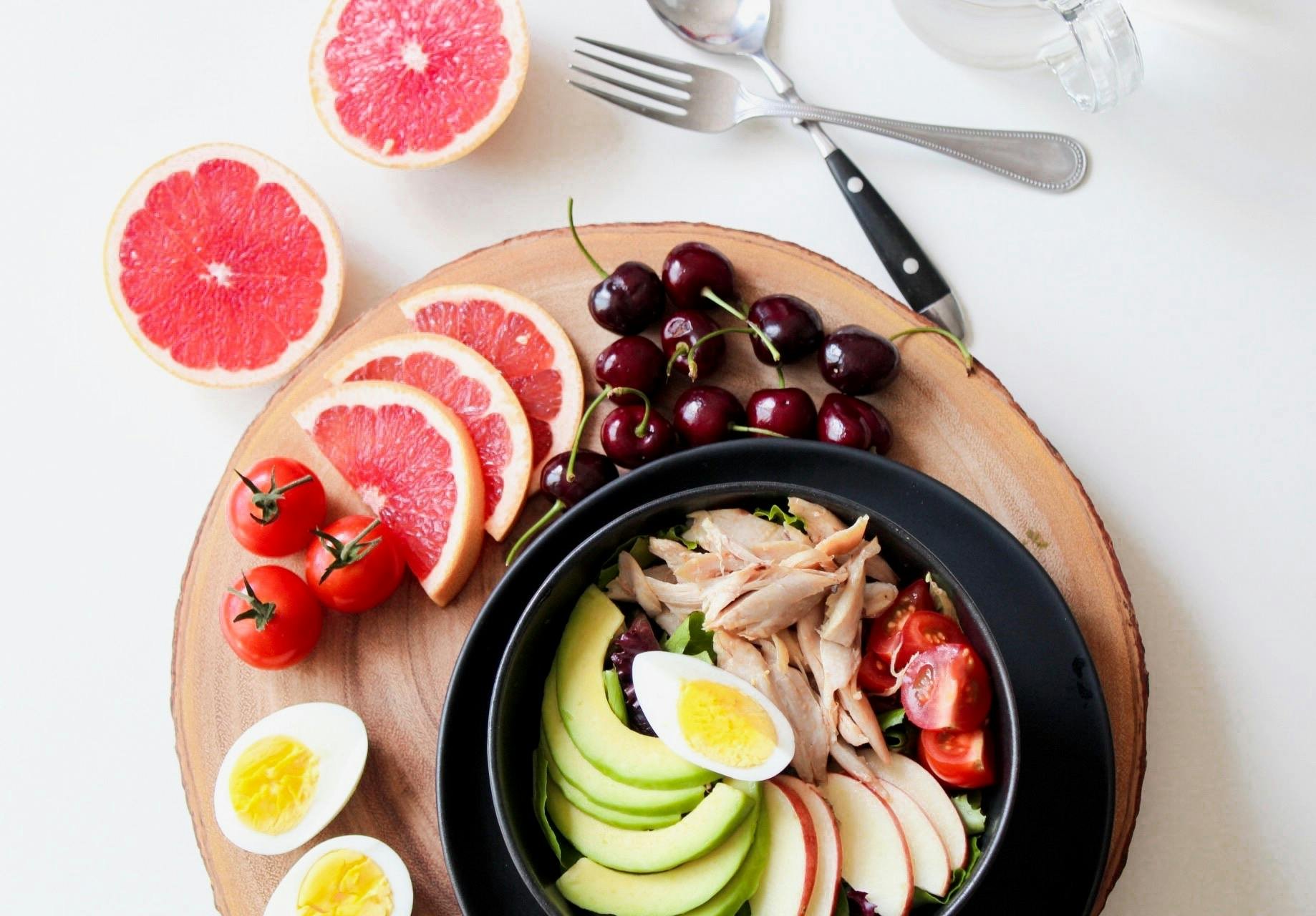Rethinking Weight Loss: Less Sugar & More Fibre, Not More Protein
Eggs
Rethinking the Protein Obsession
For years, the wellness space has championed high-protein diets as the gold standard for weight loss. And while protein is undeniably essential for satiety, muscle repair, and metabolic support, new research is revealing that more isn’t always better.
A recent clinical study compared two groups each following the same low-glycemic, high-fibre eating plan. However, while one group consumed the standard recommended daily allowance (RDA) of protein at 0.8 grams of protein per kg, the other group doubled the RDA for protein at 1.6 grams of protein per kg. The results? Both groups lost weight and improved their metabolic health, but the higher-protein group did not experience greater weight loss or lesser waist size reduction. What was concluded to have made the biggest impact to weight loss? Eating a low GI diet.
This finding challenges the idea that loading up on protein is the magic bullet. Instead, it highlights the power of a fibre rich, low-GI approach - a core tenet of my Nourish3 Method, which blends whole plant fibre, clean protein, and healthy fats to fuel your body with balance. No extremes. Just nourishment that supports what your body needs.
What does this mean for you? If you’ve been loading up on protein shakes, grilled chicken, and eggs thinking it’s the fastest way to lose weight, it might be time to zoom out and look at the bigger picture. Sustainable, healthy weight loss isn't about one magic macronutrient. It's about how your whole diet supports your metabolism, hormones, and gut health.
Almonds
Protein + fat + fibre
The Power of Fibre and Blood Sugar Balance
Instead of focusing solely on protein, this study points toward something even more impactful for losing weight: eating a low GI diet, which means reducing added sugars, increasing fibre intake, and choosing foods that keep your blood sugar stable.
Why does this matter? Because when your blood sugar is constantly spiking (hello, white bread, white rice, pastries, sodas, and ultra-processed food), your body stays in a state of inflammation and fat storage. On the other hand, when your blood sugar is steady, you feel fuller for longer, have fewer cravings, and naturally support fat loss and hormone balance.
Let’s Breakdown What "Low GI" Means?
GI stands for Glycemic Index, a tool that measures how quickly a carbohydrate-containing food raises your blood sugar levels. The scale runs from 0 to 100. The higher the number, the faster your blood sugar spikes.
Here’s the breakdown:
Low GI (55 or less) = slow, steady release
Medium GI (56–69) = moderate rise
High GI (70 or more) = quick spike, followed by a crash
Low-GI Examples:
Lentils (29)
Apples (36)
Steel-cut oats (42)
Sweet potato (54)
Chickpeas (28)
Quinoa (53)
Carrots (39)
Pears (38)
Grapefruit (25)
Medium-GI Examples:
Brown rice (68)
Popcorn (65)
Pineapple (59)
Honey (61)
Mango (60)
High-GI Examples:
White bread (75)
Cornflakes (81)
Rice crackers (87)
Instant mashed potatoes (85)
Watermelon (76) (note: real-life blood sugar responses may vary)
Notice how many ultra-processed or starchy refined foods sit in the high GI category, while fibre-rich, whole plant foods tend to be in the low to moderate range?
A low-GI, high-fibre way of eating can look like:
Starting your day with a savoury egg breakfast or quinoa porridge with chia seeds instead of anything overly sweet like sugary cereals or jam on toast
Swapping white rice for lentils or farro
Adding avocado or nuts to meals for sustained energy
Choosing fresh fruit over juices
Building meals around vegetables, legumes, and whole grains
The Takeaway
Protein absolutely has a place in a well-balanced diet and I always recommend hitting at least the RDA (recommended daily allowance), but it’s not the only player. If you want to lose weight, feel energised, and support long-term wellness, reducing sugar, choosing low-GI foods, and upping your fibre is a powerful and often overlooked strategy.
And the best part? You don’t have to diet. Just nourish wisely.
Grains, beans, & legumes
Final Thoughts
Protein matters but it’s not the whole picture and we shouldn’t get obsessed with it. What your body truly craves is fibre-rich, unprocessed nourishment that doesn’t cause daily glucose chaos. Through my NOURISHED Program, we replace guesswork with structure - supporting your goals with real food, real data, and real transformation.
Ready to feel the difference? Let’s personalise your path. Book a discovery call to chat about how steady blood sugar, empowered choices, and elevated energy can become your new normal.




